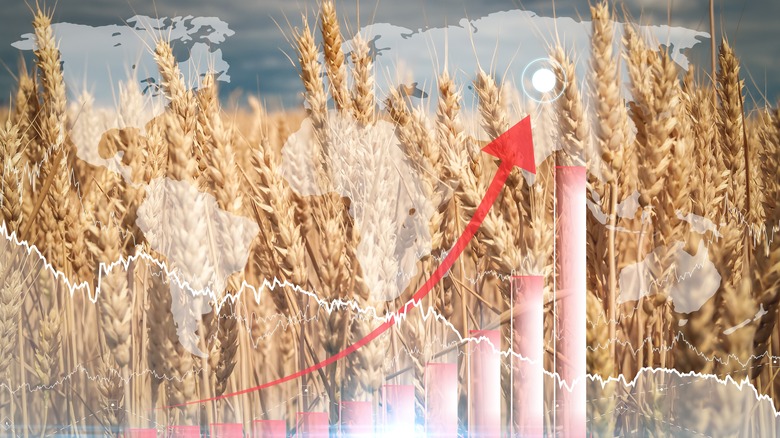Worldwide Food Prices Are Slowly Dropping, Except For 2 Categories
Recent months have seen record high food prices and mass food inflation, and grocery shoppers worldwide are hungry for a change. According to the U.S. Department of Agriculture (USDA), food prices in April 2022 were 9.4% higher than in April 2021 and, if nothing changes, the trend is expected to continue. The USDA's 2022 Food Price Outlook predicts pork prices to increase by 6-7%, poultry prices to increase by 8.5-9.5%, seafood prices to increase by 7-8%, and other meat prices to increase by 9-10%. Even the Biden administration doesn't seem to have any words of comfort for concerned U.S. consumers.
But, luckily, it looks like things might be changing for the better, after all. The Food and Agriculture Organization of the United Nations (FAO) just released its Food Price Index, a monthly analysis of global food prices and their fluctuations — and it brings good news. As of May 2022, average food prices, it says, are down 6% from the month before. And considering April saw lower prices than March, it's safe to say we're on a roll.
The global price decrease, the FAO says, is largely due to the drop in vegetable oil prices, which were significantly affected by supply shortages and trade restrictions from the Russia-Ukraine conflict. Now, as Indonesia's palm oil export ban has lifted and other cooking oils return to supermarket shelves, prices are going down. However, two categories of food in the FAO's report remain high — in fact, they've both increased, and the conflict overseas might be to blame.
Wheat and meat have the market beat
According to the FAO Food Price Index, meat and cereals are continuing to get more expensive. Bacon and cornflakes for breakfast, anyone? Probably not. Per the FAO, cereal prices are up 2.2% in May from April, and international wheat prices rose 5.6% in that one-month span — a whopping 56.2% higher than wheat prices in 2021. Meat prices reached a record high as well.
According to FOX Business, combined, Russia and Ukraine make up 29% of all wheat exports worldwide. Export bans and restricted access to Ukraine trade ports have made the staple food item a hot commodity. Since Russia invaded Ukraine in late-February, wheat prices have continued to rise, reaching $10.59 per bushel in May — the highest price in 14 years, reports CNBC.
The story is similar for global meat prices. In Ukraine, the poultry industry encountered obstruction due to increasing chicken feed prices — most feed contains sunflower oil and wheat, both of which have been in short supply due international export restrictions. However, in the case of rising global meat prices, overseas conflict isn't the only culprit. In March, a mass outbreak of bird flu in North Carolina caused tens of thousands of chickens to be euthanized, per USA Today. While the outbreak was contained, it still had a major effect on global and domestic commercial poultry.

